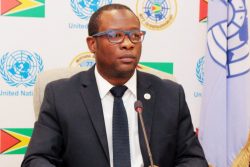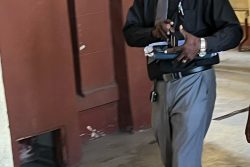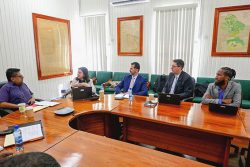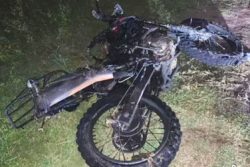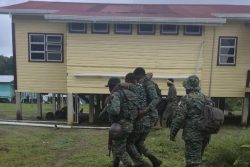The Ministry of Natural Resources and the Environment is still to release its findings on the status of a controversial new road that would go past Parabara, in Region Nine, and for which the Bartica miner responsible had obtained the consent of the leader of the community.
Preparatory activities for construction of the road started a few months ago and according to several persons with knowledge of the situation the road would have crossed the Kuyuwini River and lead towards the Upper Essequibo. Reports about the road have prompted concern since it would be located in one of Guyana’s most pristine and biodiversity rich areas in the Upper Takutu/Upper Essequibo region.
The Ministry of Natural Resources and the Environment has acknowledged that it had received reports of the new road and announced a probe but has not released details yet and the status of the road is unclear.
Parabara has not yet obtained title to the land where the community is situated.
Following a gold rush in 2009/2010, use of the trail linking Parabara and Karaudarnawa village had increased significantly. In a letter published in last Thursday’s edition of Stabroek News, Permanent Secretary in the Ministry of Natural Resources and the Environment Joslyn McKenzie said that Guyana’s monitoring system set up to monitor forest change, found that the “road is 23km from Parabara mining area, done within a legally issued mining concession, which borders the edge of the forest area into the Southern Rupununi savannah.”
According to McKenzie, the road has driven approximately 16 hectares of deforestation and is typically 10 metres wide with some wider spots. It was mapped and classified as a 10 metre road, but with some variation in width at points, he said. According to McKenzie, the road then continues through to Aishalton for a further 18km over the savannah, where it meets a junction of roads that continue on up to Lethem. “The road has driven approximately 16ha of deforestation and very little degradation. It lies in the vicinity of Buri-sanawa, passing through Baboon Hill, Sabernawau village, Sabemawau River and Karaudarnawa village,” McKenzie said.
But the road referred to by Mckenzie is not the one that has evoked concern. McKenzie did not immediately respond to several queries from Stabroek News and yesterday said that answers would be provided on Monday.
“Rupununi people aren’t fooled…by published details of a road from Parabara which is quite a different road from the one on which construction preparations were recently halted, thanks to press coverage and international reaction. A different road altogether,” a letter-writer wrote in Friday’s edition of Stabroek News.
Stabroek News had learnt that the Bartica miner had been issued with several mining concessions in the area in 2010 and was working with a Brazilian to construct the road. While the ministry has said that no permission was given for the construction of the road, it appeared to be the one referred to by McKenzie and did not address the new road. Stabroek News was told that machinery was readied, camps were built, materials stock-piled, and preparatory work done to begin construction of the road.
The Bartica miner behind the construction was granted several prospecting permits medium scale (PPMS) in the area by the Guyana Geo-logy and Mines Commis-sion (GGMC) in 2010. Fears have been expressed that the road and the mining activities expected to follow would greatly harm the environment of one of Guyana’s most pristine and biodiversity rich regions. Mining activities in the area have already caused damage, according to several reports including by a WWF-sponsored team which had expressed concern.
Earlier this month, after several reports surfaced that a road was being built, the Guyana Human Rights Association (GHRA) expressed fear of the consequences of a road in that area of southern Guyana. “Guyana’s last frontier is being breached by Brazilian mining interests who are constructing a road intended to drive deep into the heart of South Rupununi, eventually reaching the New River Triangle. This development will generate a cascade of economic, social, security, political and environmental problems in an area of Guyana which currently has token governmental infrastructure,” said the organisation in a statement.
Over recent weeks, reports have surfaced that a road was being built in the area. Reports indicated that it was being built beyond Parabara, which is 247 kilometres away from the regional capital, Lethem. The relatively pristine area contains the headwaters of several rivers that eventually join the Essequibo. While it is relatively understudied, assessments have found the biodiversity of the area to be rich, with some of the species endemic to that area.
The Amerindian community of Parabara is one of the more remote communities in Guyana and is located along the biodiversity-rich Kuyuwini River. It is close to the Marudi Mountains where mining is currently ongoing.
Another area in the Deep South Rupununi where mining is currently ongoing is Wakadanawa.
